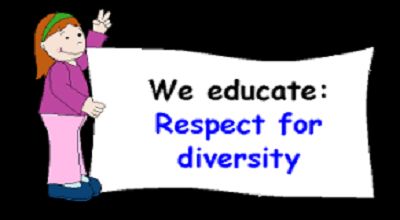Teaching students how to respect cultural diversity
Teaching students how to respect cultural diversity is crucial for fostering a more inclusive and understanding society. Here are some strategies that educators can employ to instill these values in their students:
Promote Cultural Awareness:
- Integrate diverse perspectives into the curriculum, including literature, history, and social studies from various cultures.
- Use diverse examples and case studies to illustrate concepts in different subjects.
- Celebrate cultural heritage months or events to highlight the richness of various cultures.
Create a Inclusive Classroom Environment:
- Establish ground rules that encourage respect, empathy, and open-mindedness.
- Emphasize the importance of active listening and valuing different viewpoints.
- Display diverse and inclusive images, posters, and materials in the classroom.
Encourage Personal Connections:
- Invite guest speakers from different cultural backgrounds to share their experiences.
- Encourage students to share their cultural traditions, customs, and stories.
- Foster cross-cultural friendships and collaboration within the classroom.
Integrate Multicultural Resources:
- Use diverse teaching materials, including textbooks, videos, and online resources.
- Incorporate literature and media that represent a variety of cultures.
- Provide access to resources that showcase the contributions of different cultures.
Address Stereotypes and Bias:
- Discuss and challenge stereotypes and biases whenever they arise.
- Use critical thinking activities to help students question assumptions and stereotypes.
- Provide resources that highlight the diversity within cultures, dispelling monolithic perspectives.
Promote Inclusive Language:
- Encourage the use of inclusive language that respects different cultural identities.
- Discuss the impact of language on perceptions and stereotypes.
- Teach about the importance of avoiding microaggressions and unintentional biases in communication.
Engage in Multicultural Celebrations:
- Celebrate cultural festivals and holidays from various backgrounds.
- Organize multicultural events or projects that involve students learning about and appreciating different cultures.
- Attend or organize field trips to cultural events, museums, or exhibitions.
Model Inclusive Behavior:
- Teachers should model respect for diversity in their own actions and attitudes.
- Address and correct any discriminatory behavior promptly.
- Highlight the benefits of diversity and inclusion in real-world contexts.
Reflect on Cultural Competence:
- Encourage students to reflect on their own cultural backgrounds and biases.
- Integrate activities that promote self-awareness and understanding of one’s cultural identity.
Involve Families:
- Engage parents and guardians in cultural exchange activities.
- Encourage families to share their cultural traditions and stories.
- Foster a sense of community that values and respects cultural diversity.
By implementing these strategies, educators can contribute to creating a positive and inclusive learning environment where students learn to appreciate, respect, and celebrate cultural diversity.





